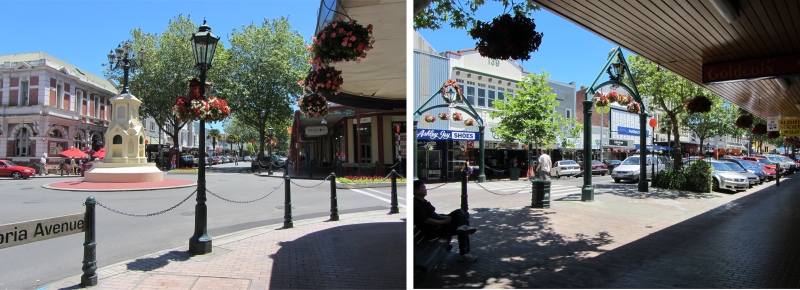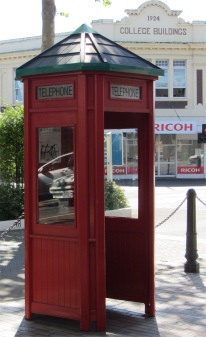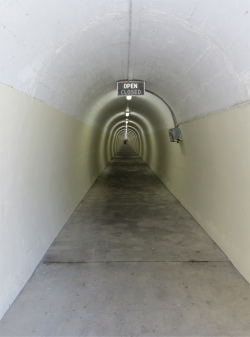
Mount Ruapehu
|
I walked down Victoria Avenue, the main shopping road through the city. It was bedecked with hanging baskets and flower beds, indeed the whole city was a mass of flowers. This was the only place of reasonable size I had come across since I left Auckland. At the bottom of Victoria Avenue, I crossed the City Bridge from Taupo Quay, to gain access to a long tunnel burrowed into the hillside. I entered, my footsteps echoing down the whitewashed tunnel, and reached a dead-end after 200m. Here I rang a bell to summon the Durie Hill Elevator. The clanking of a ship's anchor chain seemed to emanate from the depths of the hill, then with a final clunk, a 1919 lift appeared, complete with cheery attendant. I was whisked at hair-raising snail pace 65m up to a viewpoint on the lift machinery rooftop. Here, I was afforded views across the city to snow covered Mounts Taranaki and Ruapehu and even the South Island. From this vantage point I spied immediately across the river Cook Gardens, scene of the running track where Peter Snell set a new world mile record of 3min 54.4sec in 1962. A velodrome, a 1899 colonial-style Royal Wanganui Opera House, and the 1901 Ward Observatory also resided in the gardens.
I overheard a couple chatting next to me on the rooftop, with a tongue similar to Dutch. "Are you from Holland?" I asked. "No, we are from Switzerland," they replied. They must have spotted the confusion in my face. "We are from the German Canton, but we have a different dialect," they added.

Sarjeant Gallery on Queens Park
|
I took time out and sipped a coffee by the river, pondering the name behind the city. Until recently it was generally written as "Wanganui" and pronounced with a w by non-speakers of Maori, and a wh (pronounced "f") by those Maori speakers from other areas who knew its derivation. Following an article about the river by David Young in the New Zealand Geographic magazine that used "Whanganui" throughout, in accord with the wishes of the local iwi, the spelling of the river's name reverted to Whanganui in 1991. The region's name is now sometimes also spelt "Whanganui", but the city has kept the spelling "Wanganui". A non-binding referendum was held in Whanganui in 2006, where 82 percent voted for Wanganui without an 'h'. Turnout was 55.4 percent. In December 2009 the government decided that while either spelling was acceptable, Crown agencies would use the Whanganui spelling. I am still bewildered.
Time was running out before the city closed down for Christmas. I just had time to visit the grassy Queens Park area with its restored Victorian and Edwardian houses, which could be regarded as the cultural heart of the city. I had a very quick 40 minutes in the Whanganui Regional Museum in the park, which exhibited: The Maori Court
Te Ati Haunui a Paparangi featuring the war canoe
Te Mata o Hoturoa and other taonga Maori, a 1900 - 1920 Hanganui street and the Te Pataka Whakaahua Lindauer Gallery. The gleaming neoclassical Sarjeant Gallery, crowning the hill in the park, provided me with my art appreciation fix, though I only had five minutes before I was turfed out.
In the early evening, I came across a bar which had tables and chairs outside, with a band playing good music on the pavement. I took time out, enjoyed a cool beer and just appreciated the music for an hour until Christmas Eve beckoned the band members.
On my walk back to camp, the air was fragrant with the heady perfume from all the flowers in abundance. I joined in with the spirit, and everybody I met on my walk I greeted them with a cheery Merry Christmas, and we're all friends after that. All the families in New Zealand clan together for Christmas, just as they do all over the world. Travellers like myself have to make the best of it. It will certainly be different, but hopefully it should be fun.






